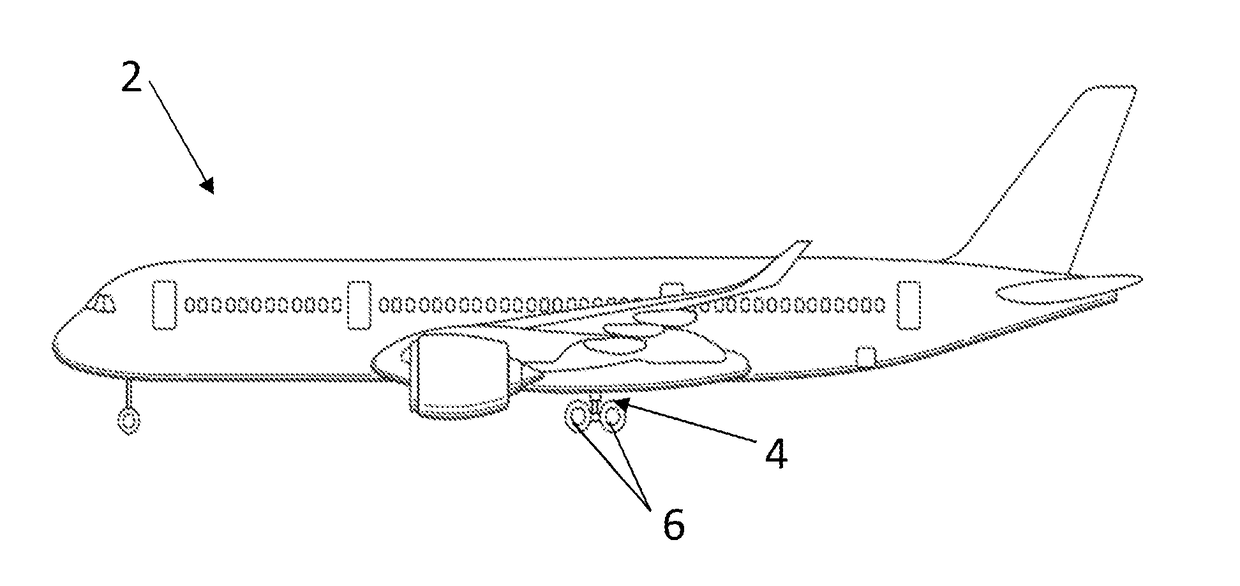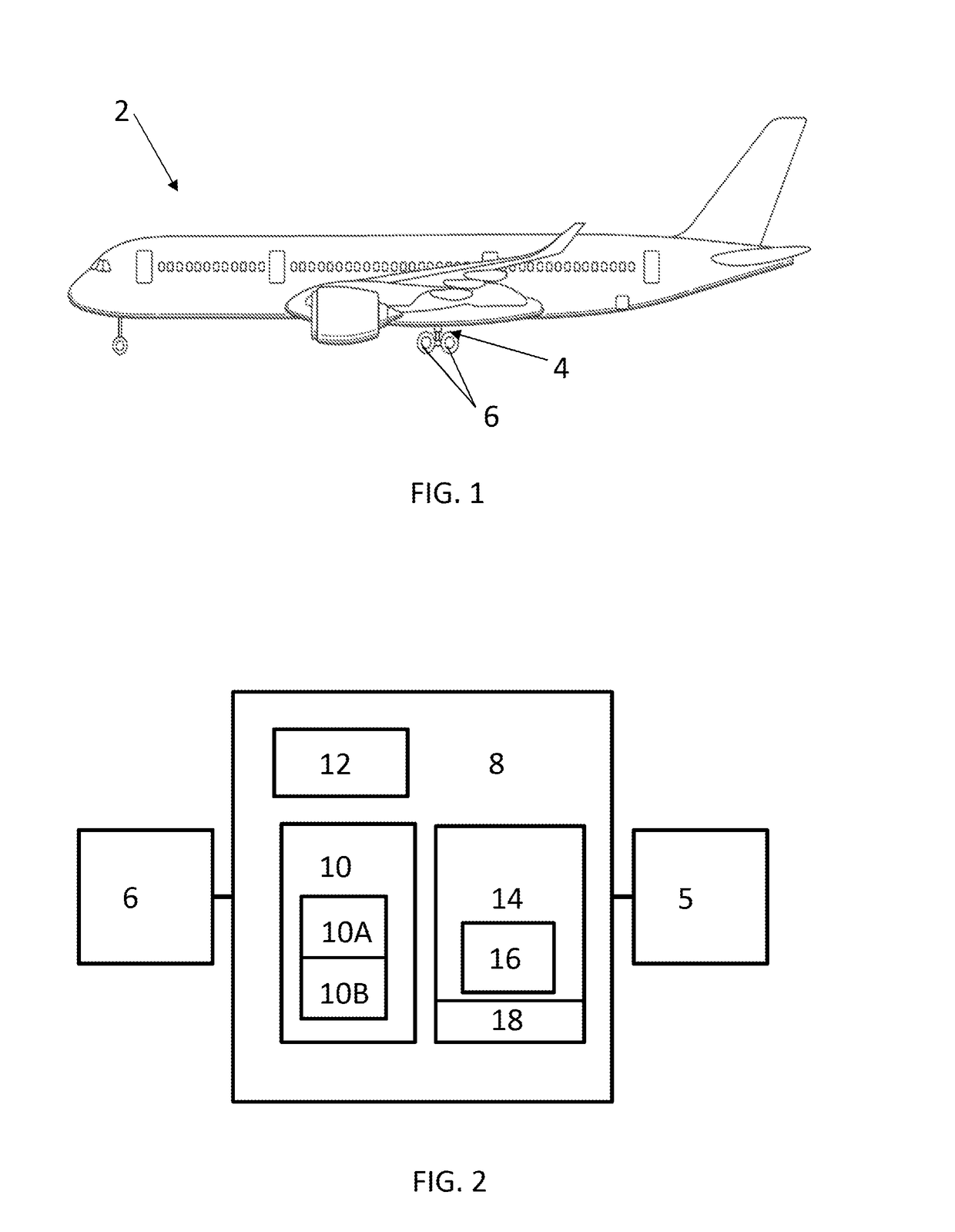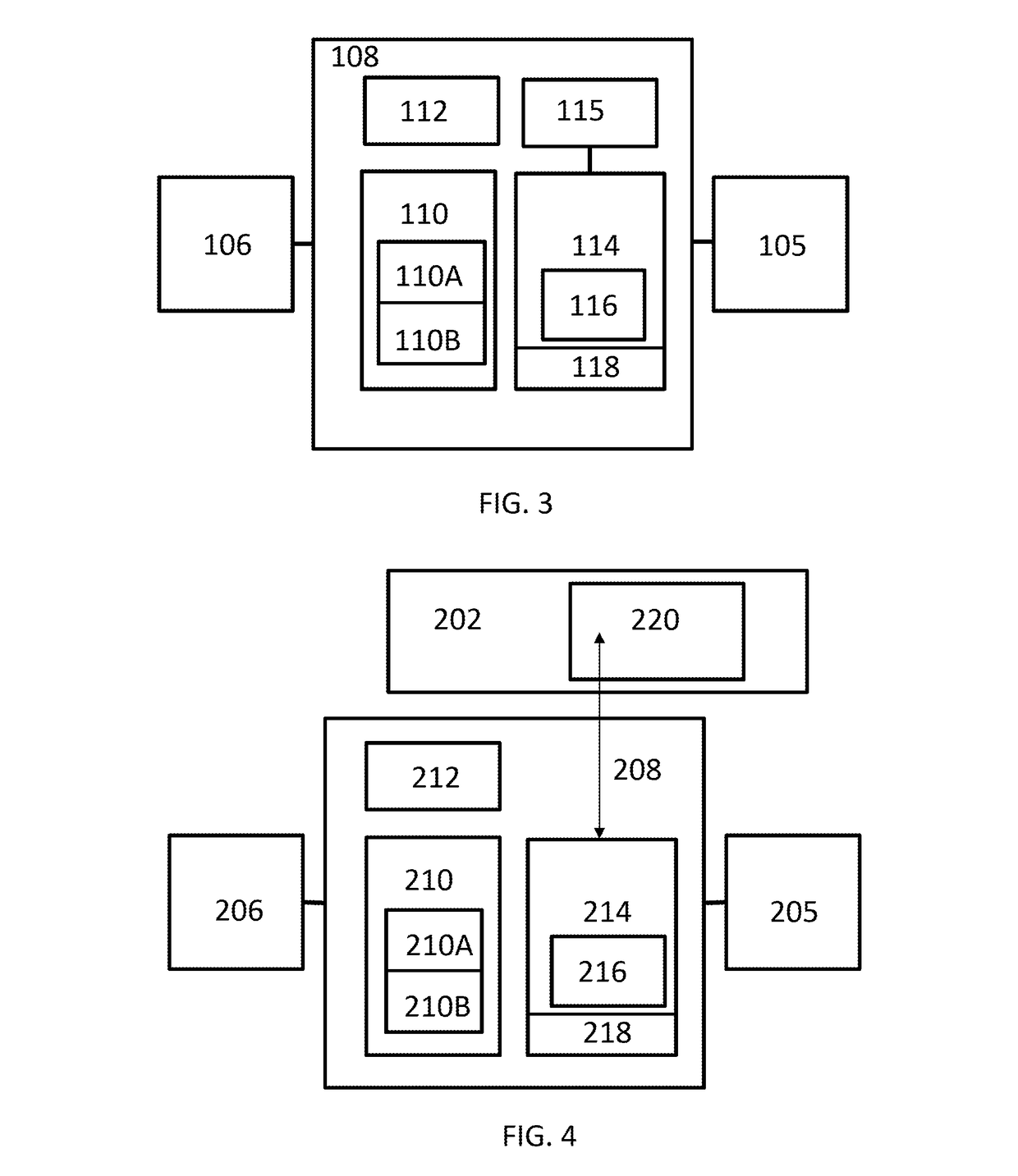Aircraft brake and cooling methods therefor
a technology for aircraft brakes and cooling methods, which is applied in the field of cooling methods of aircraft brakes, can solve the problems of reducing the maximum temperature reached, reducing the size (and therefore the mass) of the brake pack, and reducing the temperature ris
- Summary
- Abstract
- Description
- Claims
- Application Information
AI Technical Summary
Benefits of technology
Problems solved by technology
Method used
Image
Examples
Embodiment Construction
[0045]FIG. 1 shows an aircraft 2 having main landing gear 4, the main landing gear 4 including a landing gear bogie 5 and wheels 6. Each wheel 6 is associated with a brake 8 (not shown separately in FIG. 1). As shown schematically in FIG. 2, each brake 8 includes a brake pack 10 having several disk-like carbon stators 10a connected to the landing gear bogie 5 and several disk-like rotors 10b connected to the wheel 6, and a hydraulic system 12 arranged to move the stators 10a into contact with the rotors 10b in order to apply the brake 8. Also included in brake 8 is a cartridge 14 which is in contact with the inner rim of each stator 10a. Prior to use the cartridge 14 contains a quantity of distilled water 16. The cartridge 14 also includes a bung 18.
[0046]In use, when the brakes are applied heat is generated within the brake pack 10 due to friction between the rotors 10a and stators 10b. A portion of this heat energy is transferred to the cartridge 14 and from there to the water 16 ...
PUM
 Login to View More
Login to View More Abstract
Description
Claims
Application Information
 Login to View More
Login to View More - R&D
- Intellectual Property
- Life Sciences
- Materials
- Tech Scout
- Unparalleled Data Quality
- Higher Quality Content
- 60% Fewer Hallucinations
Browse by: Latest US Patents, China's latest patents, Technical Efficacy Thesaurus, Application Domain, Technology Topic, Popular Technical Reports.
© 2025 PatSnap. All rights reserved.Legal|Privacy policy|Modern Slavery Act Transparency Statement|Sitemap|About US| Contact US: help@patsnap.com



